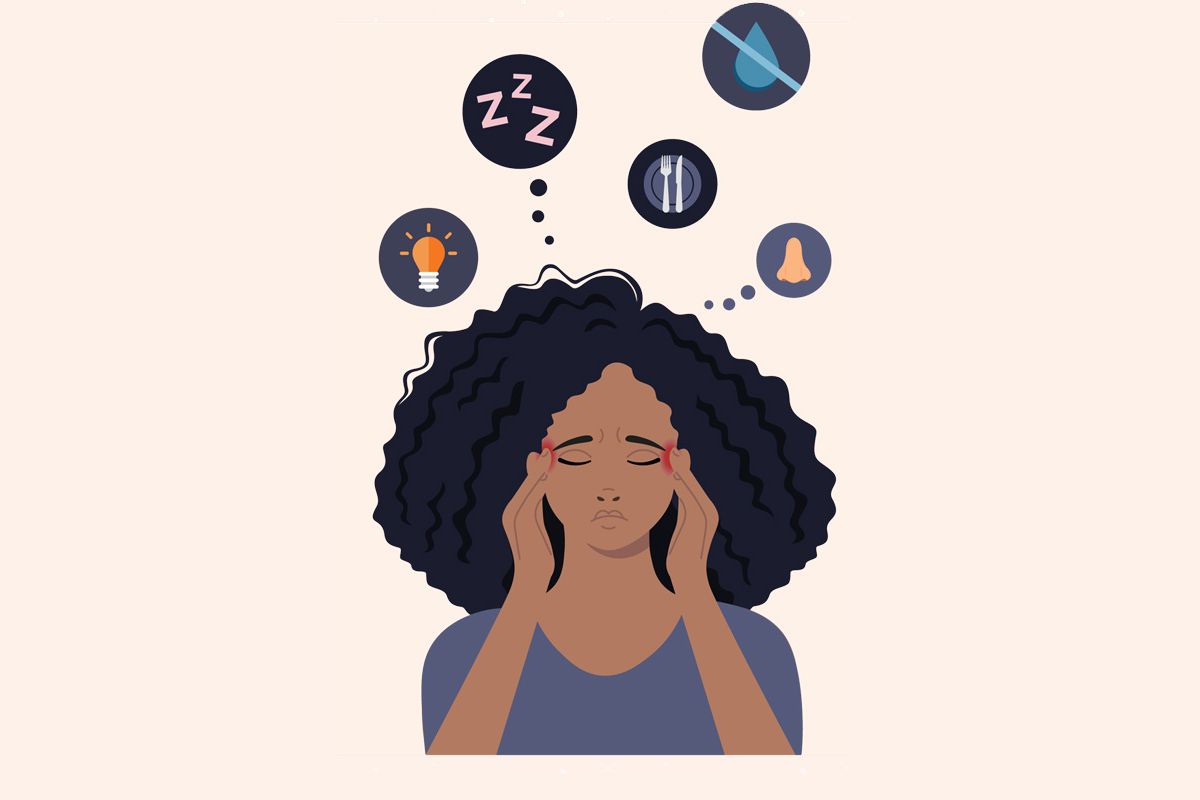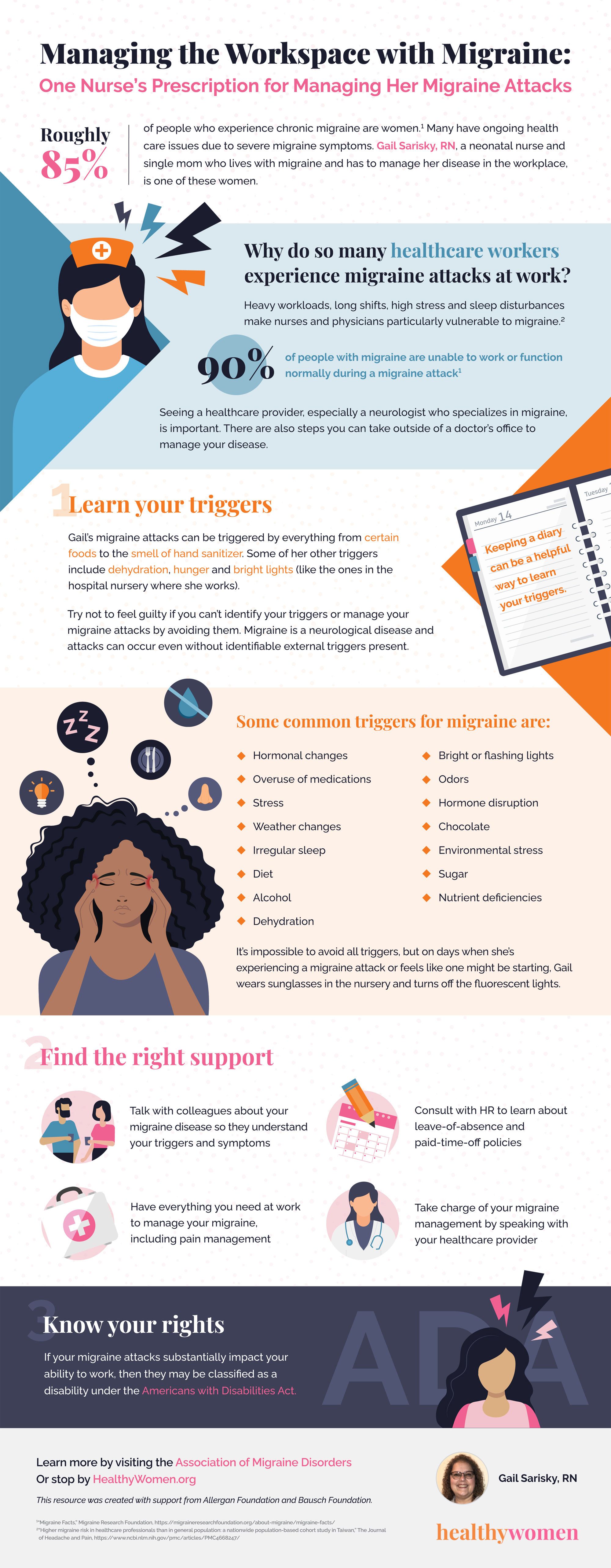Roughly 85% of people who experience chronic migraine are women.
Many have ongoing health care issues due to severe migraine symptoms.
Gail Sarisky, RN, a neonatal nurse and single mom who lives with migraine disease in the workplace, is one of these women. Here are her tips for managing your migraines.
Why do so many health care workers experience migraine attacks at work?
Heavy workloads, long shifts, high stress and sleep disturbances make nurses and physicians particularly vulnerable to migraine.
90% of people with migraine are unable to work or function normally during a migraine attack.1
Seeing a health care provider, especially a neurologist who specializes in migraine, is important. There are also steps you can take outside of a doctor’s office to manage your disease.
Learn your triggers
Gail’s migraine headaches can be triggered by everything from certain foods to the smell of hand sanitizer. Some of her other triggers include dehydration, hunger and bright lights (like the ones in the hospital nursery where she works).
Keeping a diary can be a helpful way to learn your triggers.
Try not to feel guilty if you can’t identify your triggers or manage your migraine attacks by avoiding them. Migraine is a neurological disease and attacks can occur even without identifiable external triggers present.
Some common triggers for migraine are:
It’s impossible to avoid all triggers, but on days when she’s experiencing a migraine or feels like one might be starting, Gail wears sunglasses in the nursery and turns off the fluorescent lights.
Find the right support
Talk with colleagues about your migraine disease so they understand your triggers and symptoms
Have everything you need at work manage your migraine, including pain management
Consult with HR to learn about leave-of-absence and paid-time-off policies
Take charge of your migraine management by speaking with your health care provider
Know your rights
If your migraine attacks substantially impact your ability to work, then they may be classified as a disability under the Americans with Disabilities Act.
Learn more by visiting the Association of Migraine Disorders
Or stop by HealthyWomen.org.








